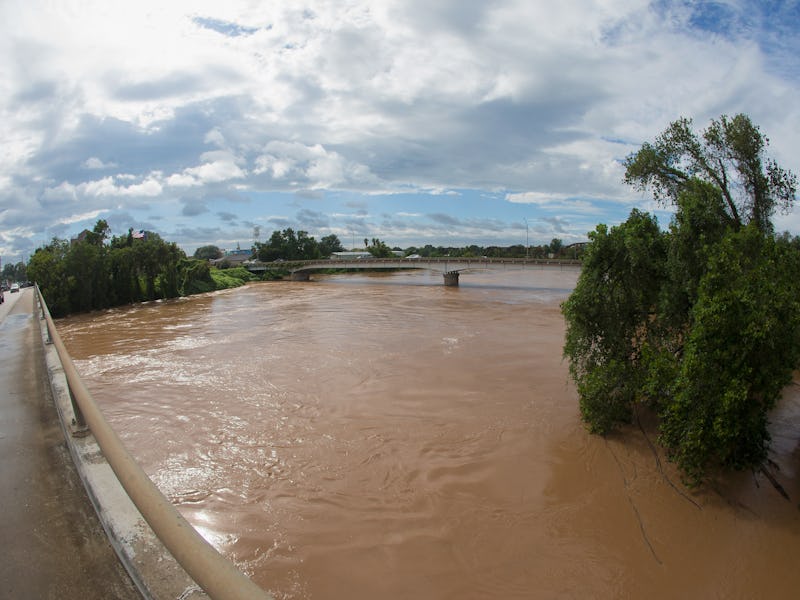EPA Confirms 13 Toxic Waste 'Superfund' Sites in Texas Have Flooded
Toxic chemicals could spread through nearby communities.

While the effects of Hurricane Harvey’s devastation are still being discovered and dealt with, new information is emerging about how the flooding has affected sites of toxic waste.
Following an earlier story by The Associated Press, the news agency reported that the EPA has now confirmed that 13 of the 41 Superfund sites in Texas have suffered flooding from Hurricane Harvey and are “experiencing possible damage.”
Superfund sites are highly polluted locations monitored by the EPA that require long-term cleanup plans to deal with the hazardous material they host.
One Superfund site detailed by The Associated Press, the Highlands Acid Pit, is now totally under water. The site was once the dumping ground for toxic sludge and sulphuric acid from the oil and gas industry. According to the AP:
Though 22,000 cubic yards of hazardous waste and soil were excavated from the acid pits in the 1980s, the site is still considered a potential threat to groundwater, and the EPA maintains monitoring wells there.
Nearby residents and local environmental advocacy groups are now concerned that pollutants could be moving through the water into homes and across communities.
The EPA has said that it hasn’t been able to physically visit Houston-area sites as of yet, and had confirmed the 13 affected sites via aerial imagery. While the AP had accessed sites by boat or by foot, the EPA did not confirm why it had been unable to do so, other than saying in a statement that “teams are in place to investigate possible damage to these sites as soon flood waters recede, and personnel are able to safely access the sites.”
To give another example, the San Jacinto River Waste Pits Superfund site in Harris County was also completely covered with floodwaters on Thursday. The soil in the San Jacinto Superfund contains dioxins and toxins linked to birth defects and cancer, according to an EPA survey from 2016.
However, EPA officials said Saturday that part of the San Jacinto site included a temporary “armored cap” that was designed to prohibit toxic material from moving into a nearby river. Still, the EPA said that depending on river conditions, they would attempt to reach the site by boat Monday to survey the damage.
Must Read: As Fake Images Of Hurricane Irma Go Viral, Here’s What We Really Know